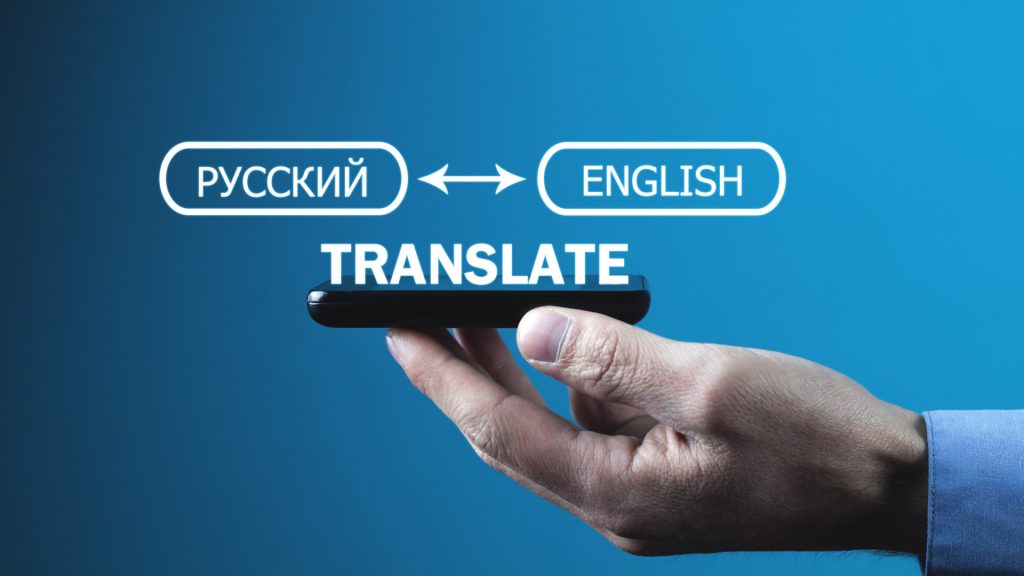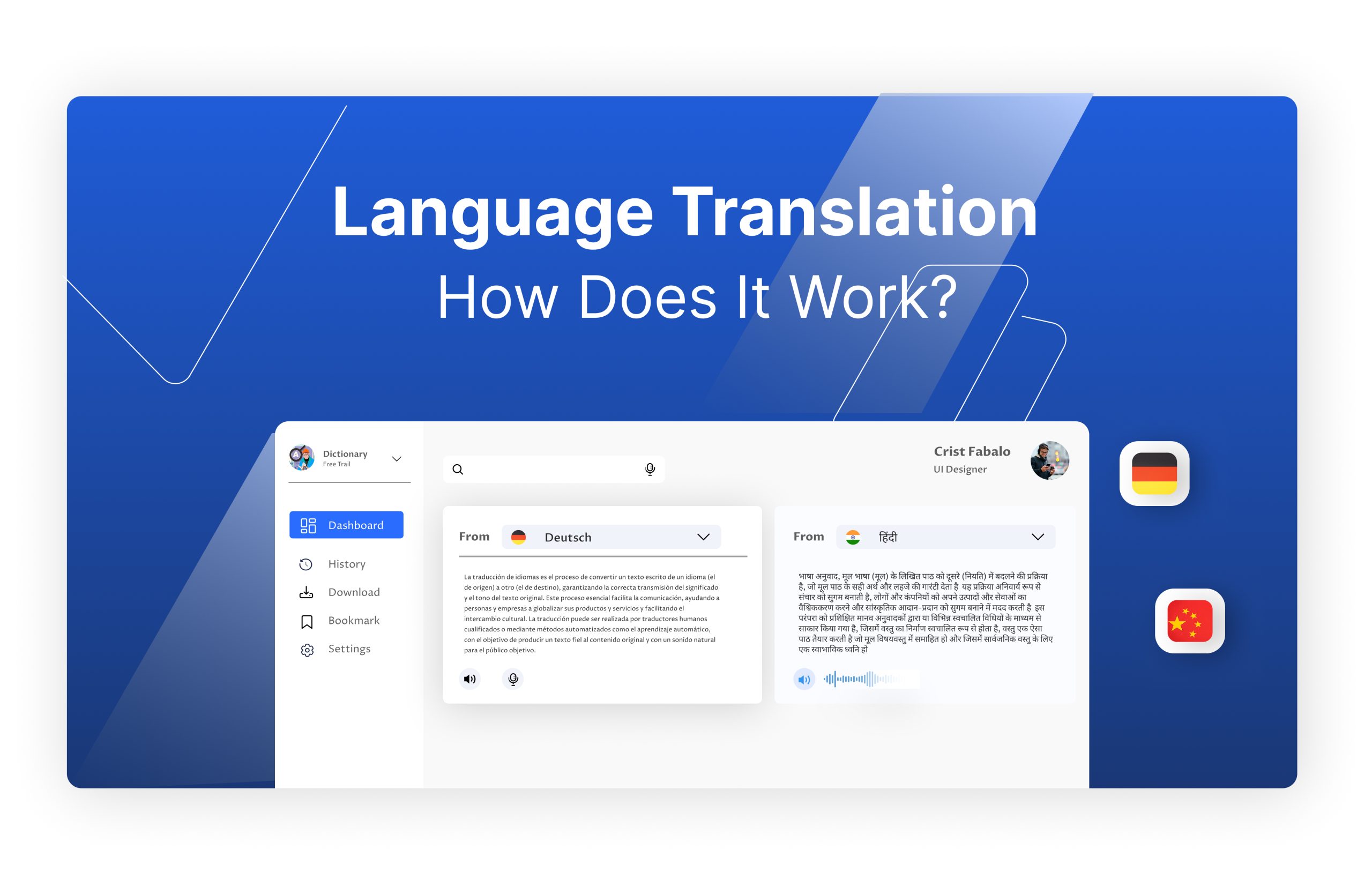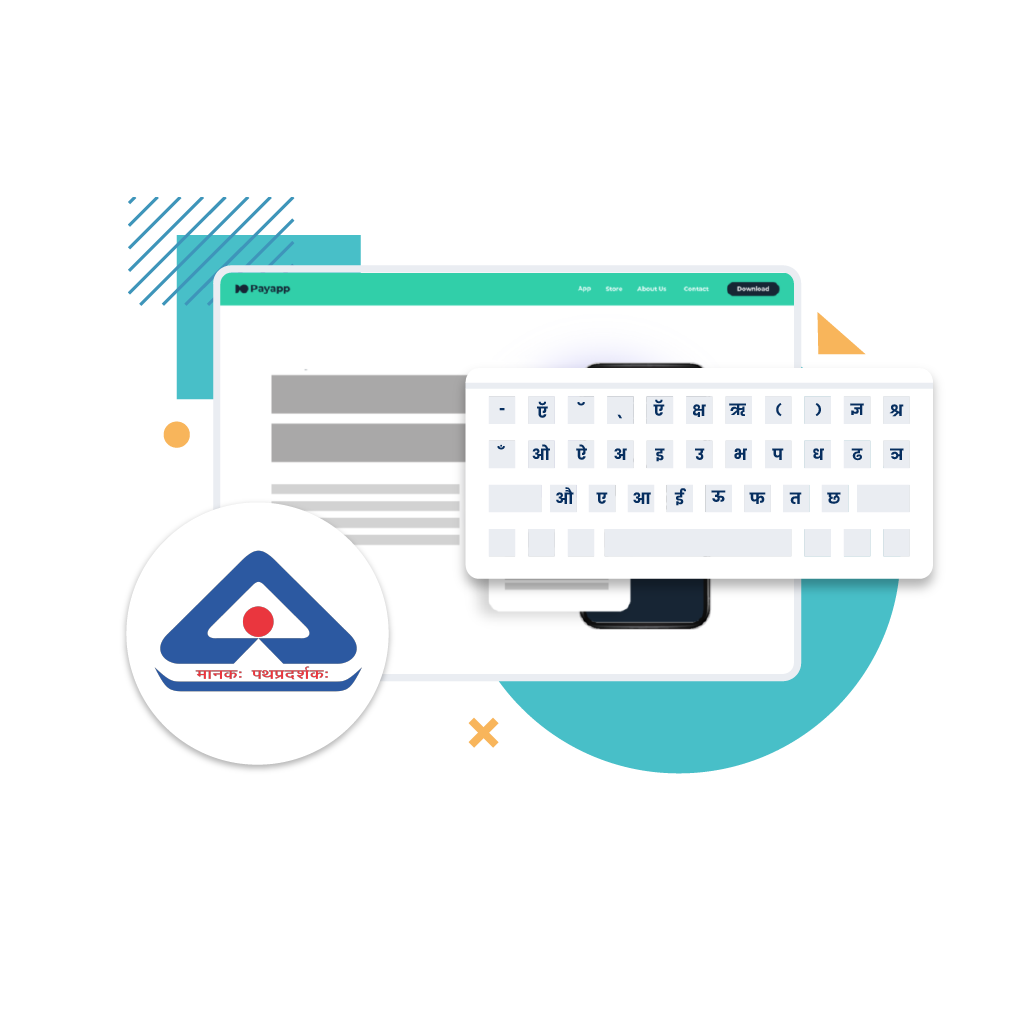Language translation is a critical tool for connecting people, businesses, and governments across linguistic boundaries. It goes beyond simply converting words from one language to another and ensures that meaning, tone, and cultural context are preserved.
Accurate translation allows organisations to communicate effectively, engage wider audiences, and maintain consistency across all markets.
In this blog, we explain what language translation is, how it works, the main methods and types, the challenges involved, and the benefits for organisations looking to reach multilingual audiences.
At a glance:
- Language translation goes beyond words. Effective translation preserves meaning, tone, and cultural context to ensure content resonates with the audience.
- Translation is a process, not a task. Workflows include source analysis, translation, review, and technology support like neural machine translation to maintain accuracy and consistency.
- Different content demands different approaches. Businesses use documents, websites/apps, software/UI, creative, and industry-specific translation to meet varied needs.
- Challenges are real but manageable. Cultural nuances, brand voice, technical terminology, and scaling updates require careful planning and the right tools.
- Modern tools make translation smarter. These platforms combine automation with human review to deliver continuous localisation, faster go-to-market, and consistent multilingual content.
What is Language Translation?
Language translation is the process of converting written content from one language into another while preserving its original meaning, tone, and intent. Unlike a simple word-for-word conversion, effective translation adapts grammar, style, and cultural nuances so the message resonates naturally with the target audience.
In business contexts, this ensures that documents, websites, and digital experiences are not only understood but also trusted.
It is also important to clarify the difference between translation and interpretation. Translation deals with written text, for example, localising a product manual or website into multiple languages.
Interpretation, on the other hand, is about spoken language, such as real-time communication in meetings or conferences. While both serve to bridge language barriers, translation demands precision in writing, editing, and consistency, often over large volumes of content.
How Does Language Translation Work?

Behind every accurate translation is a structured workflow designed to preserve both meaning and context. For businesses managing multilingual content at scale, understanding this process is key to maintaining consistency across websites, apps, and customer touchpoints.
1. Source Text Analysis
The process begins with analysing the original content. Translators or systems look at grammar, syntax, tone, and cultural references. For example, an idiom in English may need to be adapted into a completely different phrase in Hindi or Tamil to make sense.
2. Translation Process
Next comes the actual conversion of meaning into the target language. This is not a word-for-word swap, but a careful rendering that ensures intent, nuance, and brand voice are preserved.
3. Review and Editing
Translated text goes through quality checks to ensure accuracy, consistency, and readability. For companies, this step often involves style guides, brand glossaries, and cross-checking against regulatory requirements.
4. Technology Layer
Modern translation relies heavily on technology. Neural machine translation provides speed and scale, while tools like translation memory, glossaries, and APIs ensure consistency across large projects. These systems help businesses avoid repetitive costs and accelerate turnaround times.
This is where platforms like Anuvadak make a difference. Instead of treating translation as a one-off project, Anuvadak automates continuous localisation, allowing businesses to manage multilingual websites in real time.
Methods of Language Translation

Different methods of translation come with their own advantages and trade-offs. The right approach depends on the type of content, the required level of accuracy, and the scale of the project.
1. Human Translation
Professional translators bring cultural sensitivity, contextual understanding, and subject-matter expertise. This makes human translation ideal for legal documents, marketing campaigns, or any content where nuance and brand tone are critical. The trade-off is that human translation takes more time and comes at a higher cost.
2. Machine Translation
Machine translation, powered by algorithms and neural models, offers unmatched speed and scalability. It is effective for handling large volumes of text or real-time communication. However, machines often struggle with idioms, tone, and cultural nuance, which can affect readability and brand perception.
3. Hybrid Translation (AI + Human Review)
Organisations often rely on a hybrid approach, where machine translation provides the initial draft and human experts refine it for accuracy and cultural fit. This model balances efficiency with quality, ensuring speed without sacrificing brand consistency.
Anuvadak supports this hybrid model by combining neural machine translation (NMT) with structured workflow management. Businesses can automate the heavy lifting of multilingual content creation while still integrating human review where it matters most. The result is faster turnaround, consistent quality, and scalable multilingual communication.
Types of Translation Businesses Use

Translation in the business world is rarely one-size-fits-all. Different types of content demand different approaches, levels of accuracy, and workflows. Here are the major categories businesses typically encounter:
1. Document Translation
From contracts and compliance manuals to HR policies and technical training guides, documents form the backbone of business communication. Accuracy here is non-negotiable. Even a minor mistranslation in a legal clause or safety guideline can result in financial loss, reputational damage, or regulatory penalties.
Companies often rely on specialised translators with legal, financial, or technical expertise for this type of work.
2. Website and App Localisation
Websites and mobile apps are often a customer’s first interaction with a brand. Localisation ensures not only that the language is translated, but that the user experience feels natural to the target audience.
This can mean adapting:
- Design elements
- Formats (dates, currencies, measurements)
- Navigation
- Even SEO keywords for local search engines
Continuous localisation platforms like Anuvadak make this process scalable by automatically updating new content across multiple languages.
3. Software and UI Localisation
For SaaS products and applications, the interface must be intuitive in every market. Translation involves everything from tooltips, buttons, and menus to error messages and onboarding flows. Consistency is critical: mismatched terminology across different parts of the product can confuse users and erode trust. Translation memory tools help maintain this consistency across releases and updates.
4. Creative Translation / Transcreation
Marketing and brand communications need more than literal translation. Slogans, ad copy, social media campaigns, and brand messaging often require a complete rewrite in the target language to evoke the same emotion and impact.
This process, called transcreation, blends linguistic expertise with cultural insight to ensure the brand voice resonates locally without losing its essence.
5. Industry-Specific Translation
Certain industries carry their own terminology, standards, and compliance rules.
- Legal translation must capture exact phrasing and context to hold up in contracts or court.
- Financial translation involves annual reports, disclosures, and market analyses where precision is vital for compliance.
- Medical translation includes patient information, research papers, and clinical trial data, where clarity and accuracy can directly affect patient safety.
- Technical translation covers manuals, engineering documents, or product specifications, where small errors can impact usability or safety.
Each of these industries requires subject-matter expertise in addition to linguistic skill. This is something businesses should always look for when selecting translation partners or tools.
Challenges in Language Translation

While translation opens the door to global and multilingual markets, it also presents several challenges that businesses must manage carefully:
1. Cultural Nuances and Idioms
Direct translations often miss the subtle cultural meanings behind phrases, idioms, or humour. A literal translation can sound awkward or even offensive if the cultural context isn’t considered. Skilled translators or hybrid models ensure content feels authentic in every market.
2. Maintaining Brand Voice
Consistency in tone and messaging is critical for global brands. Translating content while keeping the same personality, style, and emotional impact across languages is complex. Without careful review, brands risk sounding inconsistent or losing their identity in different regions.
3. Handling Technical or Industry-Specific Terms
Specialised industries such as legal, finance, healthcare, or technology use jargon and precise terminology that cannot be loosely translated. Errors here can cause compliance risks or operational problems. Glossaries and domain-trained translators help maintain accuracy.
4. Consistency Across Large Volumes of Content
For enterprises managing websites, apps, product documentation, and customer communication, keeping translations consistent across thousands of touchpoints is a major challenge. Without proper workflows, terminology may vary and confuse users.
5. Scaling Updates Without Downtime
Websites and applications often update frequently. Ensuring new content is translated and published quickly without breaking the user experience is difficult. Traditional manual processes can delay launches, while automation-driven platforms like Anuvadak enable continuous localisation with zero downtime.
Benefits of Effective Translation for Businesses

For businesses, translation is not just about converting words from one language to another. It is a strategic capability that enables growth, builds stronger relationships with customers, and ensures compliance in diverse markets.
When managed effectively, translation can offer the following benefits:
1. Expands Market Reach and Adoption
By translating websites, apps, and digital assets, organisations can connect with audiences who prefer or require content in their native language. This opens new customer segments, improves product adoption, and fuels international or regional expansion.
2. Builds Customer Trust and Loyalty
Customers are more likely to engage with brands that communicate in their language. Translation demonstrates respect for cultural identity, strengthening trust and long-term loyalty. For businesses, this directly impacts retention and lifetime value.
3. Supports Compliance with Local Language Policies
In multilingual countries like India, businesses and government agencies must comply with regional language policies. Effective translation ensures legal adherence while making services accessible to citizens in their preferred languages.
4. Enhances Accessibility and Inclusivity
Translation makes digital services usable for wider audiences, including those underserved by English-only platforms. This inclusivity not only improves user experience but also aligns businesses with broader ESG and social responsibility goals.
5. Drives ROI Through Efficiency
Companies that invest in effective translation accelerate their go-to-market timelines, reduce manual localisation costs, and avoid expensive rework caused by poor-quality translations. Automation platforms like Anuvadak further amplify ROI by managing continuous updates at scale without downtime.
The Future of Language Translation
Translation is moving beyond static documents and one-off projects. Modern technology is making it faster, more accurate, and integrated into everyday business processes.
1. Growing Role of AI and Neural Machine Translation (NMT)
Neural machine translation now delivers results that capture context and intent, not just word-for-word meaning. This allows teams to publish content in multiple languages at speed, while keeping quality close to human standards.
2. Speech-to-Text and Text-to-Speech for Accessibility
Translation is no longer limited to written text. Speech-to-text enables instant transcription for meetings, training sessions, and customer support. Text-to-speech makes digital content available in natural audio for users who are visually impaired or prefer listening over reading. Together, these tools make information more accessible and user-friendly.
3. Continuous Localisation for Real-Time Updates
Digital platforms are updated constantly, and translation has to keep pace. Continuous localisation ensures new content is automatically translated and published without delay. With platforms like Anuvadak, updates roll out in real time across multiple languages, eliminating downtime and manual bottlenecks.
Effortless Website Translation with Anuvadak
Language translation becomes a business advantage only when it can be delivered consistently, securely, and at speed. That’s where Anuvadak, a localisation and translation management platform, steps in.
Designed for organisations that need to maintain multilingual digital assets, Anuvadak combines automation with human review to make localisation seamless.
Key Capabilities of Anuvadak
- Fast Go-to-Market: Automated localisation powered by neural machine translation allows businesses to launch multilingual websites quickly without sacrificing quality.
- Zero Downtime: New content is continuously detected, translated, and updated in real time, ensuring localised sites are always current without interrupting user experience.
- CMS and Tech Stack Compatibility: Anuvadak integrates smoothly with a wide range of CMS platforms and web stacks, eliminating the need for costly redevelopment.
- Multilingual Sub-Domain Management: The platform automatically creates and manages sub-domains for each localised version, making it easier to structure and scale multilingual sites.
- Built-In Analytics: With a centralised dashboard, teams can monitor translation progress, track user engagement, and make data-driven improvements.
- Automation with Control: Routine tasks like string synchronisation and localised page previews are automated, while human translators can step in for review to ensure cultural and linguistic accuracy.
Anuvadak makes managing multilingual websites faster, more accurate, and scalable, giving organisations the tools to reach diverse audiences without added complexity or downtime. To learn more, contact us now.
Wrapping Up
Language translation is no longer optional for organisations aiming to reach diverse audiences. Accurate, culturally aware translations drive market expansion, build trust, and improve accessibility, all while supporting compliance and efficiency. By understanding the methods, challenges, and types of translation, businesses can choose the right approach for their content and goals.
Platforms like Anuvadak show how modern technology can simplify multilingual content management. By combining neural machine translation with automated workflows and human review, it enables continuous localisation at scale, helping organisations stay current, consistent, and accessible across languages.
Take the next step in expanding your reach and improving user experience by exploring how Anuvadak can transform your multilingual strategy.
Schedule your demo today to see it in action.
Faqs
1. What is language translation?
Language translation is the process of converting written text from one language to another while maintaining meaning, tone, and context.
2. What is an example of a language translator?
Examples include software like Google Translate or platforms like Anuvadak that combine AI and human review for accurate translations.
3. What is a language translator, and explain its types?
A language translator can be a person or software that converts text between languages. Types include human translation, machine translation, and hybrid models combining both.
4. How does translation differ from interpretation?
Translation deals with written text, whereas interpretation focuses on spoken or signed communication. Translators work with documents, interpreters handle real-time verbal exchanges.
5. Why is cultural context important in translation?
Cultural nuances ensure the message resonates with the target audience. Ignoring them can lead to misunderstandings or content that feels unnatural.
6. What are the challenges in language translation?
Challenges include handling idioms and cultural nuances, maintaining brand voice, managing technical terms, ensuring consistency, and scaling updates efficiently.




